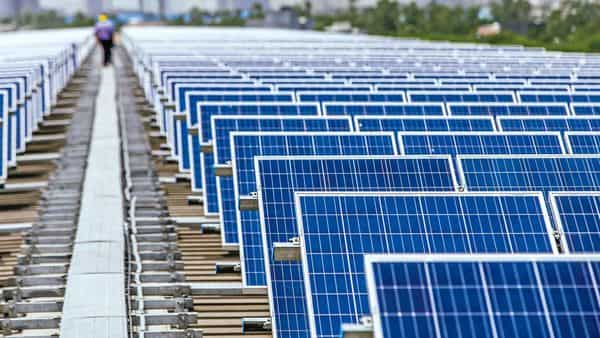India will get 10 GW proposals for organising solar equipment manufacturing capability – Mint
NEW DELHI :
India has received proposals for setting up 10 gigawatt (GW) of solar equipment manufacturing capacity, said petroleum and natural gas minister Dharmendra Pradhan on Tuesday.
This follows India’s plan of imposing tariff and non-tariff barriers to put a check on all imported solar cells, modules and inverters, that will make their sourcing from China expensive. Around 80% of the solar cells and modules used here being bought from China and accounted for around $2.16 billion of imports in 2018-19.
“Under the ‘Atma Nirbhar Bharat Abhiyaan’ or Self-Reliant India reform announced by Hon’ble Prime Minister Narendra Modi, our country has received proposals from various players for over 10 GW of fresh solar equipment manufacturing,” Pradhan said while speaking at the first World Solar Technology Summit hosted virtually by the International Solar Alliance (ISA).
India has a domestic manufacturing capacity of only 3 GW for solar cells. Recently, Adani Green Energy Ltd that has a 1.5 GW solar PV cell and modules manufacturing capacity bagged a manufacturing-linked solar contract, that entails setting up 2 GW of additional solar cell and module manufacturing capacity. Also, Reliance Industries Ltd has plans for the clean energy space.
Prime Minister Narendra Modi has said that as part of Atma Nirbhar Bharat, the country’s aim is to end its import dependence on all equipment including solar panels. He has also stated that India won’t be able to fully use its solar power potential, unless the country doesn’t develop better solar panel, battery and storage manufacturing capacity.
Imposition of tariff and non-tariff barriers has created traction for firms to set-up domestic manufacturing of solar cells and modules here, with the strategy aimed at pushing India’s attempts to become an integral part of global supply chains, as firms look to move production lines out of China following the coronavirus pandemic. India also plans to offer land near major ports for setting up solar equipment manufacturing, Mint reported earlier.
There is a growing demand for solar equipment in India given the solar power trajectory planned for the country. Green energy projects now account for more than a fifth of India’s installed power generation capacity. India has 34.6 GW of solar power, with an aim to have 100 GW of solar capacity by 2022. Also, Andhra Pradesh government is expediting efforts to float India’s largest solar tender for setting up 10 GW capacity.
“Our oil and gas companies are also making efforts to deploy solar panels across the value chain of their operations, and current installed solar power capacity is 270 MW. Additional 60 MW solar capacity will be added in the coming year. We have taken up the mission of solarizing about 50% of fuel stations owned by Public Sector oil companies in the next five years,” Pradhan said.
More manufacturers are expected to set up shop here; given India’s new playbook of not using Chinese equipment and technology in the power sector, subsidised financing and prior-permission requirements for imports from countries with which it has a conflict. Also, the Union government plans to enforce of a list of approved manufacturers for government-supported schemes in the clean energy sector, including projects from where electricity distribution companies procure electricity for supply to their consumers.
“The Oil and Gas companies in India will work closely with ISA to explore opportunities for implementation of solar-based projects within India as well as in other countries particularly other developing countries where ISA is focusing for faster development of solar energy infrastructure,” Pradhan said while announcing that five state run firms—Oil and Natural Gas Corporation Ltd, Indian Oil Corporation Ltd, Bharat Petroleum Corporation Ltd, Hindustan Petroleum Corporation Ltd and GAIL (India) Ltd—will join ISA’s Coalition for Sustainable Climate Action (ISA-CSCA) as corporate partners and will contribute to ISA’s Corpus Fund.
To set up the much-needed solar wafer and ingot capacity in the country, India also plans to come out with tenders that may provide viability gap funding (VGF) to attract domestic manufacturers, Mint reported earlier. Wafers and ingots are the building blocks for manufacturing solar cells and modules, and are essential to India’s clean energy plans. Globally, solar wafer and ingot manufacturing is dominated by China.
Subscribe to Mint Newsletters
* Enter a valid email
* Thank you for subscribing to our newsletter.
Topics


